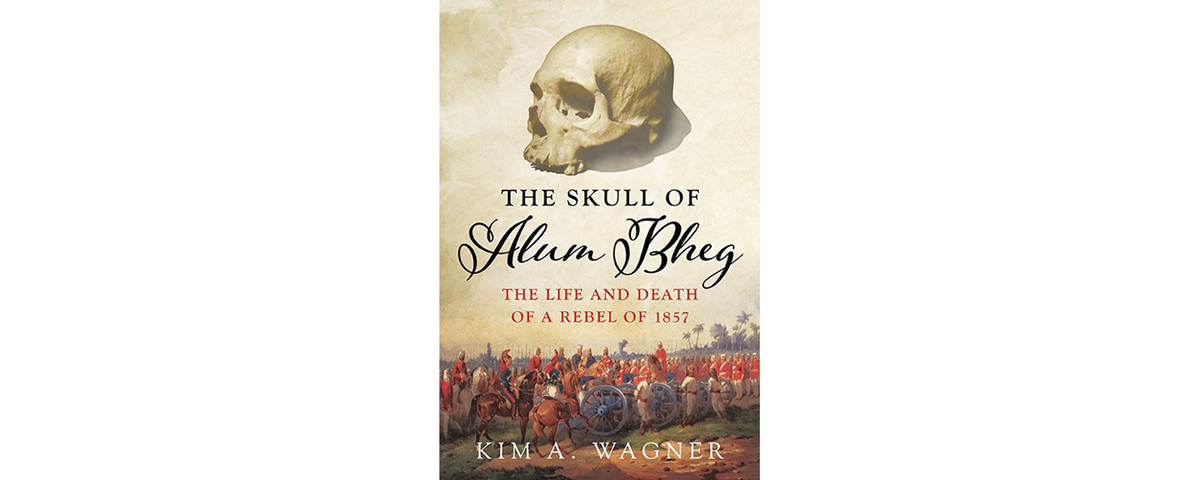The Skull of Alum Bheg: The Life and Death of a Rebel of 1857, by Kim A. Wagner, Oxford University Press, New York, 2018, $29.95
The mysterious skull that turned up in 1963 in the town of Walmer in southeast England was not quite the object the new owner of The Lord Clyde pub expected to find hidden away. Fortunately, the first lines of a note stuffed inside an eye socket revealed the identity of its long-deceased owner. It wasn’t the skull of some anonymous Victorian publican but that of Alum Bheg of the 46th Bengal Infantry Regiment, described in the note as “a principal leader in the mutiny of 1857 & of a most ruffianly disposition.” The note further recounted that as British citizens fled the mutiny, Bheg had killed British surgeon Dr. James Graham and immediately afterward butchered the Rev. Thomas Hunter, the missionary’s wife, Jane, and their daughters.
For some years the skull was on display at The Lord Clyde, proving a macabre attraction until new owners, no longer wishing to have “the thing,” sought British historian Kim Wagner’s advice. The author recalls having felt an urge “to recover something of the life story of the man who had once looked out through those eye sockets and chewed with those teeth.” So began the investigation, here brilliantly recounted, to discover as much as possible about Alum Bheg, his life, his death and how his skull wound up on British soil.
On July 9, 1857, Bheg’s regiment had mutinied at Sialkot, some 70 miles north of Lahore, though Wagner soon discovered the note erred on several details. Dr. Graham and the Hunters and their 2-year-old son—not daughters—were killed in separate and distinct incidents and not by a sepoy, or sepoys, from the 46th. At the outset of the mutiny Bheg and his regiment had headed for Delhi, until decisively halted on the banks of the Ravi by a British force led by legendary East India Co. Brig. John Nicholson, who hated sepoys.
Among those who eluded Nicholson was Bheg, who remained at large almost a year before being captured, summarily court-martialed and sentenced to death. In keeping with the custom of the era, he was strapped to the muzzle of a cannon, which a gunner then touched off. Bheg was one of the last rebels so executed in the aftermath of the mutiny. Only his head remained intact. Capt. A.R. Costello of the 7th Dragoon Guards returned home to Ireland with the grisly trophy, though where it spent the years until its rediscovery in 1963 remains a mystery.
Wagner hopes the skull will be repatriated for burial beside the Ravi, on the border between India and Pakistan. Its revealed secrets make for a compelling tale.
—David Saunders





